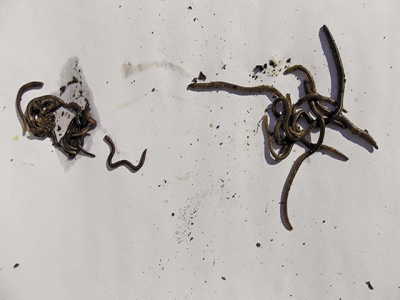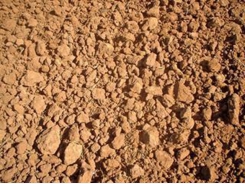The role of earthworms in boosting soil quality

Of all soil organisms, earthworms can be by far the largest component by weight. Their benefits are generally insufficiently appreciated by farmers.
To the left is the red wriggler, which works in decaying material. To the right is the type which burrows in the soil. Photo: Bill Kerr
This is so even among those who say they are happy to see earthworms returning after they have added manure to their lands. They see earthworms as a symptom of good soil but they don’t seem to realise that worms play a much more active role in the process.
Watching my own earthworm population grow, I once wondered if there were species whose main role was soil improvement and whether one could buy them. A retired researcher and earthworm expert soon corrected my misconception: she said that it did not matter which species one had in the soil – all improve soil.
In an experiment she conducted at the University of Pretoria, she placed soil in a number of pots and transplanted the same species of plant into each. Earthworms were added to half the pots. The result were incontrovertible: those plants that had had earthworms added to their soil performed better.
In trials in New Zealand, cattle farmers increased production by up to 30% by adding earthworms to the soil. Anyone who has added earthworm castings (also known as vermicastings) to seedlings or a crop will testify to the improved performance. Golf greens are mowed close to the ground and earthworm castings are not tolerated because they affect putting. However, vermicastings can be added separately as a fertiliser or top dressing, greatly improving the health of the greens.
Three groups of earthworm
There are approximately 6 000 earthworm species divided into three groups. Some species, remain in surface organic matter. An example of this is the red wriggler (Eisenia andrei) which is widely used in South Africa to produce vermicompost and vermicastings.
Vermicastings have passed through the earthworm’s gut, whereas vermicompost still has a compost fraction that has not passed through the gut. The red wriggler is also used by households to break down organic waste for use on plants. Next are the species that operate in the upper layers of the soil and move laterally and deposit their casts in the soil. The third group lives deep in the soil and comes to the surface to feed and deposit casts on the surface.
Various functions in the soil
- All earthworm species have their uses. Consider the following:
- Decaying organic matter on the soil surface or worked into the soil is consumed by earthworms when it becomes soft and full of micro organisms.
- As the soil/organic matter passes through the worm, the levels of nitrogen, potassium phosphate and calcium in it increase greatly.
Many trace minerals become available to plants.
The physical structure of the soil is also improved as the worm’s intestine produces aggregates that help with soil aeration and water penetration. This is in addition to the benefit of the tunnels made by the earthworms. Surface organic content is taken down to deeper layers by the worms.
No-till farms have higher earthworm populations. Tillage drastically reduces the earthworm population. The type of organic residue also plays a role in the numbers. A narrower carbon:nitrogen ratio is more beneficial. Earthworms also need a constant supply of raw organic matter to live.
Crucial for organic farmers
Organic farmers should increase the earthworm population of their soil as much as possible to increase soil fertility and keep nitrogen levels up, as they are not permitted to top up with chemical nitrogen fertilisers. Unfortunately, in South Africa, our hadeda ibis population is increasing. Each bird eats hundreds of earthworms a day and a flock can drastically reduce a farm’s earthworm population, as I have experienced.
Related news
Tools

Phối trộn thức ăn chăn nuôi

Pha dung dịch thủy canh

Định mức cho tôm ăn

Phối trộn phân bón NPK

Xác định tỷ lệ tôm sống

Chuyển đổi đơn vị phân bón

Xác định công suất sục khí

Chuyển đổi đơn vị tôm

Tính diện tích nhà kính

Tính thể tích ao



 Useful soil organisms
Useful soil organisms  The value of bacteria
The value of bacteria